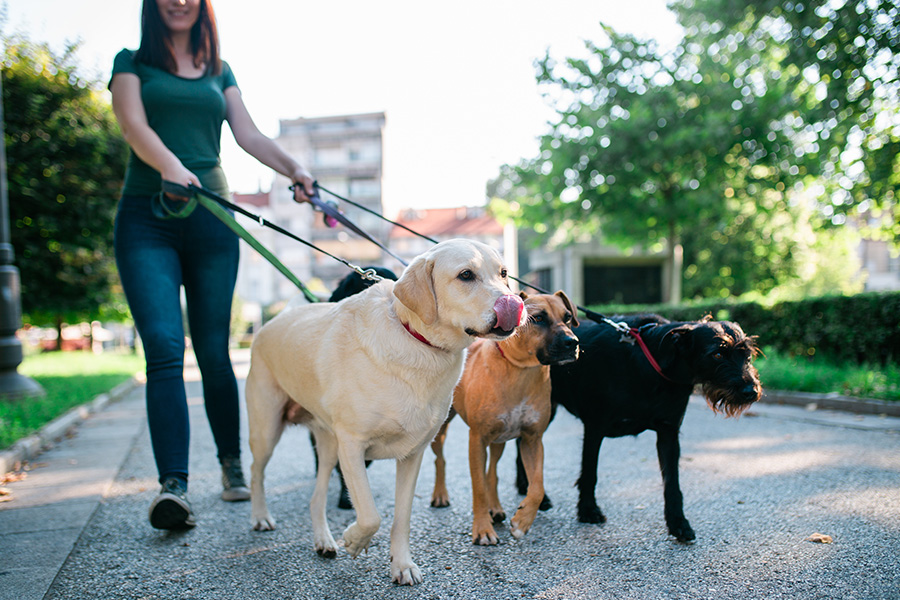Pregnancies, not just for humans but across all of the animal kingdom, are beautiful yet confusing. Keep reading to know how you can know for sure whether the little people are arriving! Here is some vital information to help you, pet parents, when you have a pregnant dog at home.
Gestation period among dogs
The gestation period or dog pregnancies duration usually lasts for around nine weeks (approximately 60 days).
When can dogs start getting pregnant?
Most dogs reach the age of sexual maturity between 6 to 12 months.
Signs of pregnancy to look out for
-
- A bigger belly </strong >
One of the most apparent signs, as in the case of all mammals, a growing belly most often means a pregnant dog.
-
- Breast and nipple size increases </strong >
The mammary glands of a pregnant dog will look visibly larger and sometimes may even leak milky fluid.
-
- An increased appetite </strong >
Appetite can reveal a lot about dogs; an increase in it may signal pregnancy. However, it is also common for pregnant dogs to go through morning sickness during the gestation period, thereby losing their appetite.
-
- Morning sickness </strong >
Morning sickness usually shows up for just a few days (unlike in humans) in dogs’ 3rd and 4th weeks of pregnancy. They may seem tired during this period and eat far lesser than they usually do.
With most of us leading busy lives today, it can be challenging to attend to all needs of our pregnant dogs. They shouldn’t have to spend time by themselves when tired during this period while you may have to step outside your home. Well, there is no reason to worry – PawSpace brings you at-home pet care solutions such as pet sitting, pet boarding, dog walking, corporate daycare, etc. Make a booking today so you can go on with your day worry less while we take good care of your soon to be mama pooch!
-
- Weight begins to increase</strong >
As the dog progresses into the gestation period, the weight will naturally increase by 15%-25%, depending on the number of puppies carried.
-
- Bodily discharge </strong >
It is natural to find a mucosal discharge from the vulva very often if your dog is pregnant.
– Fun fact </strong >
A rare phenomenon that happens ONLY among dogs, some may display all signs of pregnancy but may not be pregnant. This is known as phantasm pregnancy – wherein the dog has a growing belly, gains weight, the breast and nipple sizes increase, accompanied by an increase in appetite, bodily discharge and morning sickness; however, the dog is not carrying puppies. If you doubt that your dog may be experiencing phantasm pregnancy, it is best to consult a vet who will give suitable solutions.
– Diagnostic Tests </strong >
Once you have observed all relevant signs of pregnancy, diagnostic tests can be undertaken to gain an accurate answer.
-
- Ultrasound Scan </strong >
An ultrasound can detect pregnancy as early as three weeks into the gestation period. It detects fetal heartbeats and the vet can thereby tell you how many puppies can be expected. The test can reveal the dog’s due date too.
-
- Abdominal Palpitation </strong >
It refers to carefully massaging the mother’s womb to feel the puppies that are growing inside. This can be done as early as three weeks into pregnancy. However, it MUST NOT be performed without a trained animal professional as it can cause harm to the puppies otherwise.
-
- X Rays </strong >
The X-ray is probably the most effective way of knowing whether your dog is pregnant or not. But, unfortunately, can only be taken six weeks into the gestation period. This is because the skeletal system of the puppies will not be formed before that. X Rays can also reveal how many puppies the mother is carrying.
-
- Witness Relaxin Test</strong >
This diagnostic test can be done four weeks into pregnancy, wherein the vet tests the presence of relaxin (a hormone that is secreted when the dog is pregnant).
In India, millions of dogs are left to live alone and hungry on the streets. Some are given shelter at NGO’s. However, they crave human love, too. Breeding a dog may seem like a good way to grow your paw family. However, it certainly isn’t the best way. If you wish to add a new member(s) to your family, consider adoption. Every time you adopt a dog, you not just save a life but nurture another loving animal.







